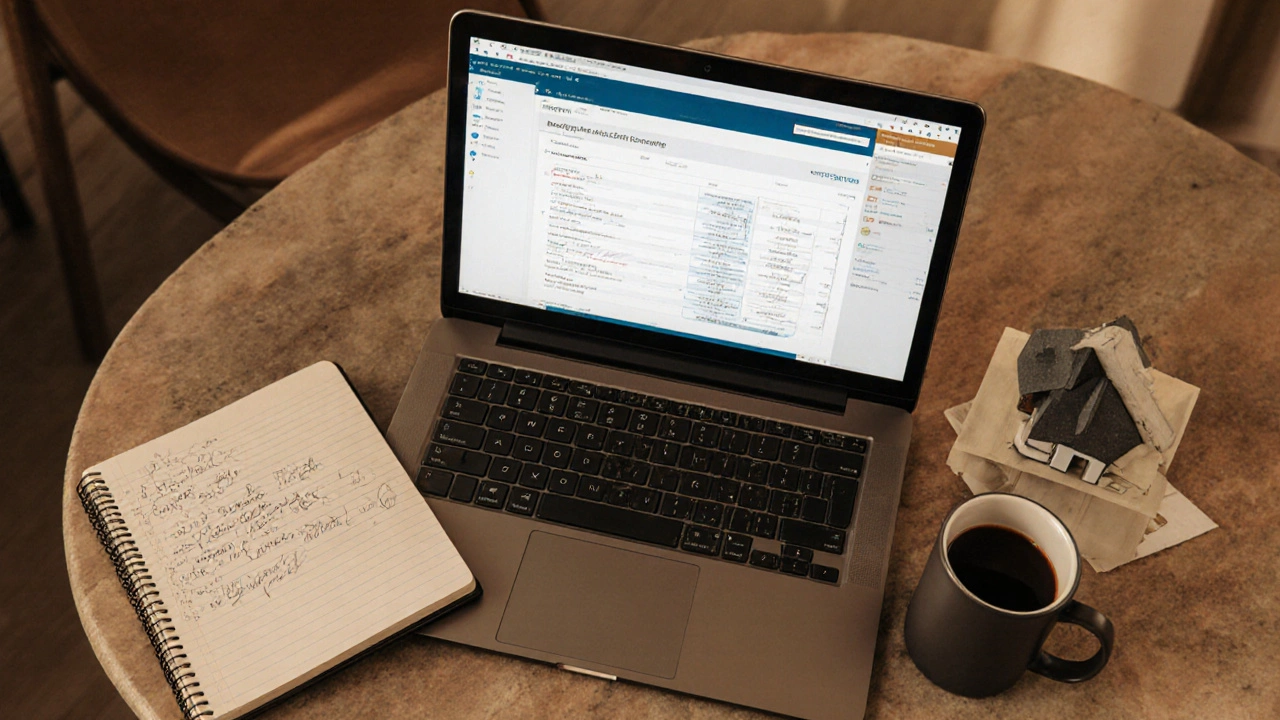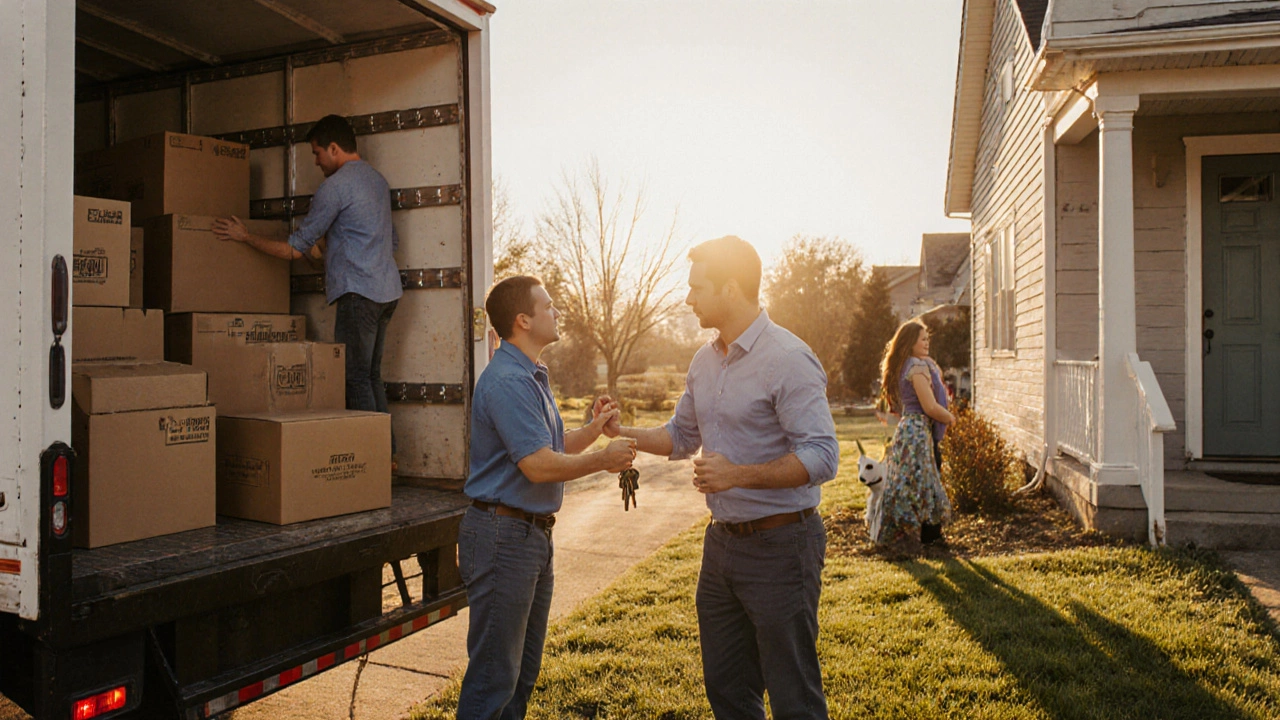House Affordability Calculator
Your Financial Information
Affordability Results
Maximum Home Price:
Estimated Monthly Payment:
Loan Amount:
Total Closing Costs:
Estimated Annual Property Tax:
Estimated Annual Home Insurance:
Got $10,000 saved and wondering what kind of home that actually buys? You’re not alone - many first‑time buyers stare at that number and ask, “Is this enough?” The answer isn’t a flat $X, but a range that shifts with your credit score, debt load, interest rates, and the local market. Below you’ll find a step‑by‑step way to turn $10,000 into a realistic home budget, plus the hidden costs most people overlook.
Key Takeaways
- With $10,000 down, most buyers can afford a home priced between $100k and $200k, depending on loan type and personal finances.
- Loan‑to‑Value (LTV) ratio, credit score, and debt‑to‑income (DTI) ratio are the three biggest levers.
- Factor in closing costs, property taxes, insurance, and reserves - they can add 3‑5% to the purchase price.
- FHA loans and some low‑down‑payment conventional programs make $10k stretch further.
- Use a mortgage calculator early to avoid surprise when the lender runs the numbers.
Understanding the Core Numbers
Before any spreadsheet magic, get clear on the key entities that drive affordability.
Mortgage is a loan specifically for buying real property, typically paid back over 15‑30 years with monthly installments. The size of the mortgage you qualify for sets the ceiling of your home price.
Down Payment is the cash you put toward the purchase price upfront, reducing the amount you need to borrow. In this guide we start with $10,000.
Loan‑to‑Value Ratio (LTV) is the percentage of the home’s price that’s financed by the mortgage (Loan ÷ Value). LTV caps are set by lenders and government‑backed programs.
Credit Score is a three‑digit number summarizing your credit history, influencing interest rates and loan eligibility. Higher scores unlock lower rates and smaller required down payments.
Interest Rate is the percentage charged on the mortgage balance each year, directly affecting monthly payments. Even a 0.5% shift can change affordability by tens of thousands over a loan’s life.
Debt‑to‑Income Ratio (DTI) is the share of your monthly gross income that goes toward debt payments, including the prospective mortgage. Most lenders cap DTI at 43% for qualified loans.
Closing Costs are fees and expenses paid at the closing of a real‑estate transaction, typically 2‑5% of the purchase price. Taxes, title insurance, and lender fees all sit in this bucket.
Property Tax is an annual levy based on the assessed value of the home, usually payable in monthly escrow. Rates vary by city and can add $1,500‑$3,000 a year for a $150k home in Auckland.

Step‑by‑Step Affordability Calculation
- Set your gross monthly income. For illustration, we’ll use $5,500 (about $66k annual) - a common figure for a mid‑level professional in Auckland.
- Determine your maximum DTI. Lenders often allow up to 43%, so 0.43×$5,500=$2,365 for total monthly debt.
- Subtract existing debt payments. If you have a car loan of $300/month and a credit‑card payment of $150, your remaining capacity for mortgage‑related costs is $2,365−$450=$1,915.
- Estimate non‑mortgage housing costs. Property tax (~1.2% of home price) and homeowner’s insurance (~$800/yr) are usually rolled into escrow. Roughly $250/month for a $150k home.Subtract that from the $1,915 left: $1,915−$250=$1,665 for principal+interest (P&I).
- Pick an interest rate. As of October2025, a 30‑year fixed rate for a conventional loan sits around 6.2%. Use a mortgage calculator: $1,665 monthly P&I at 6.2% yields a loan amount of about $260,000.
- Apply your down‑payment. Add the $10,000 you have saved to the loan amount: $260,000+$10,000=$270,000 purchase price.
- Check LTV limits. $260,000 loan ÷ $270,000 price≈96% LTV. Most conventional programs require ≤95% LTV, so you’d need a slightly larger down payment or an FHA loan (which permits up to 96.5% LTV).
Result: With $10k down, a $5,500/month income, modest debt, and a 6.2% rate, you’re looking at a home price around $250‑$270k. If your credit score is lower or rates climb, the ceiling drops closer to $200k.
Loan Options That Stretch $10,000
| Program | Minimum Down Payment | Typical Credit Score Needed | Maximum LTV | Mortgage Insurance |
|---|---|---|---|---|
| FHA | 3.5% (≈ $8,750 on $250k) | 620+ | 96.5% | Required (rate varies) |
| Conventional 97 | 3% (≈ $7,500 on $250k) | 680+ | 97% | Private Mortgage Insurance (PMI) if <20% down |
| VA (eligible veterans) | 0% (no down) | 620+ | 100% (no down) | No mortgage insurance, but funding fee applies |
Because the FHA program tolerates a lower down payment and a slightly higher LTV, the $10k can buy a $260k home with just a 3.5% contribution. Conventional 97 is close, but you’ll need a healthier credit score to avoid higher rates.
Beyond the Purchase Price - Hidden Costs to Budget For
Most buyers focus on the headline price and forget the extra layer of expenses that can eat into savings.
- Closing Costs: Expect 2‑5% of the sale price - for a $250k home that’s $5,000‑$12,500. Some lenders let you roll these into the loan, but that raises your LTV.
- Home Inspection: $300‑$600 in Auckland - a small price that can save you thousands on repairs.
- Moving & Setup: Budget $1,000‑$2,000 for movers, new utilities, and minor upgrades.
- Reserve Funds: Lenders often require 2‑3 months of mortgage payments set aside as a cushion. For a $1,665 P&I payment, that means $3,330‑$4,995 saved beyond the down payment.
Adding these to your $10k down payment could push the total cash needed to $20k‑$30k, so plan accordingly.

Quick Checklist for First‑Time Buyers with k Down
- Calculate your DTI and ensure it’s below 43%.
- Get a pre‑approval - lenders will give you a concrete loan amount and rate.
- Choose a loan program that matches your credit score and down‑payment comfort.
- Run a house affordability calculator with your specific numbers before you start house hunting.
- Save an extra 2‑3 months of mortgage payments as reserves.
- Factor in closing costs, inspection fees, and moving expenses.
- Consider properties slightly under your max price to leave room for repairs or upgrades.
What If Rates or Prices Change?
Real‑estate markets are fickle. If the 30‑year rate climbs to 7% or home prices in Auckland rise 5% year‑over‑year, your buying power shrinks. Here’s a rule of thumb: recalculate your budget whenever the rate changes by more than 0.25% or when you hear of a new median price for the neighborhoods you like.
Frequently Asked Questions
Can I buy a home with a $10,000 down payment if my credit score is 580?
A score of 580 is below the minimum for most FHA and conventional loans. You might need a co‑signer, a larger down payment, or explore specialised low‑credit programs that often come with higher interest rates and stricter terms.
Do I have to pay private mortgage insurance (PMI) with a $10,000 down payment?
If your LTV is above 80% (which it will be with only $10k down on most homes), PMI is required for conventional loans. FHA loans include an upfront and monthly mortgage insurance premium instead.
How much should I set aside for closing costs?
Plan for 2‑5% of the purchase price. On a $200k home, that’s $4,000‑$10,000. Ask your lender for a Good Faith Estimate early in the process.
Is it smarter to buy a cheaper home and save the extra money?
Often yes. A lower‑priced home reduces your loan balance, meaning less interest over time and a higher chance to avoid PMI. It also leaves more cash for repairs, upgrades, or an emergency fund.
What role does the property tax rate play in my affordability calculation?
Property tax is part of your monthly housing cost. Higher rates shrink the amount you can allocate to principal and interest, so always include an estimate based on the area’s recent tax assessments.


Corbin Fairweather
I am an expert in real estate focusing on property sales and rentals. I enjoy writing about the latest trends in the real estate market and sharing insights on how to make successful property investments. My passion lies in helping clients find their dream homes and navigating the complexities of real estate transactions. In my free time, I enjoy hiking and capturing the beauty of landscapes through photography.
view all postsWrite a comment